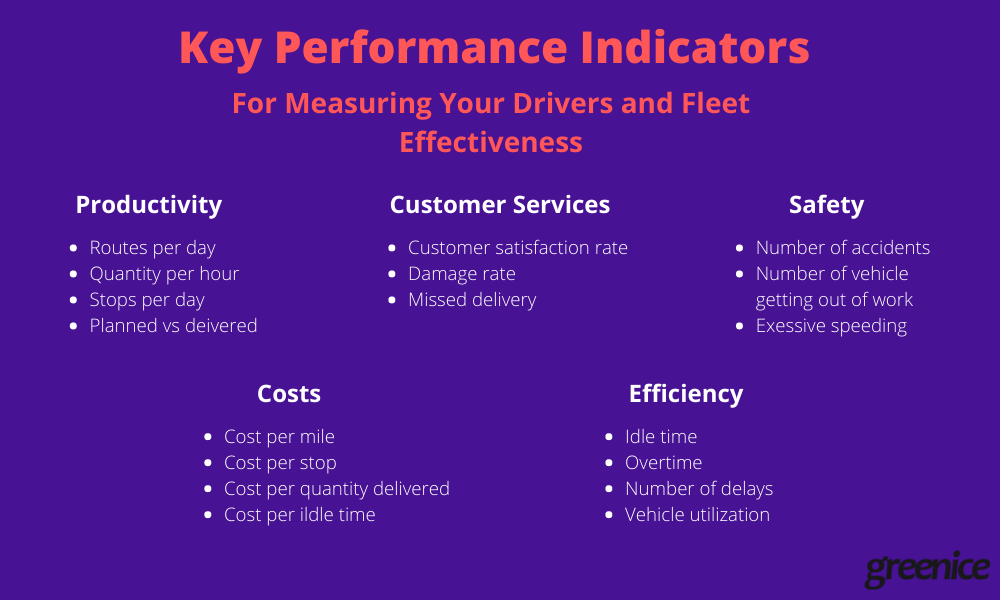“Fleet management technology is about marrying up vehicles, drivers and requirements; it is simply a tool to facilitate the professionalism of that delivery. Technology is our servant, not our master,” says Geoffrey Bray, chairman of Fleet Industry Advisory Group.
As a small company that has an owner or leased fleet of motor vehicles or professional equipment, you may be familiar with such a situation: you work hard but still suffer from such problems as poor performance, low income, and driver turnover. There are multiple reasons why you may have these problems. But as a rule, most of the challenges can be surmounted with optimization of fleet management. How can a Fleet Management Application help you automate the fleet operations and enhance the profitability of your business? Is it worth creating a fleet tracking app? What features do you need to solve your problems? How to select the right technical solutions? We hope that you’ll find out the answers in this article!
Why and How to Create a Fleet Management App?
There are two myths about creating Fleet Management Apps:
Myth 1: Only large companies need a Fleet Management System as they have a huge fleet, a lot of employees, and overall organizational complexity. In fact, small companies have the same problems as large ones but they are proportional to the company’s dimensions. Even more, some things that are insignificant in scales of a large company may be painful for a small entrepreneur. A theft of a car in a company with a 500 vehicles fleet is less problematic for the business than for a company with 10 vehicles, where such a situation can break the schedule.
Myth 2: Building a Car Management App is too costly and, as a small business, I cannot afford it. It is not necessary to create a complex system from the very beginning. Start with the most critical features (MVP) and gradually expand them if needed. Even partial automation of processes can bring huge relief. Building a Fleet Management Application, if correctly customized for your business, will pay its own way for many years on. Here are the tips on how you can improve your business with a Fleet Management Application:
1. Optimize Routing to Reduce the Operating Costs
How often does your company deal with situations when after a delivery a vehicle returns back empty? Empty miles cut your revenue because you still have to pay the driver’s salary and spend money on fuel. Also, your vehicle emits additional CO² without necessity. Optimization of routing is key to operating cost reduction.
What can you do?
- “Avoid the long-distance, one-way, multi-day trips,” says Phoenix Zhang, a senior analyst at Forrester Research. “Those are going to lose your money and not be cost-effective.”
- Carefully think over the routes and try to combine orders so that your vehicles do not go empty back to the office
- Match the right-sized vehicle proportionally to the amount of cargo.
How to automate:
- Routing: route optimization that increases the productivity and efficiency of the fleet while reducing fuel costs at the same time. For example, for one of our clients, a caregiver recruiting agency, we added this feature to automatically create the optimal route and estimate there is enough time to get from one client to another depending on their location.

2. Enhance Real-Time Dispatching to Eliminate Overlaps
Dispatching is an important activity for any transport company. The main challenge is information overload and the necessity to have schedules, routes, availability, and location of vehicles, the status of orders delivery, and many other things updated in real-time. It can be difficult to manage all these things without an effective system.
What can you do?
- Automate the process of scheduling and order management
- Equip every vehicle with a GPS tracker to be aware of its location.
How to automate:
- Dispatch Management: the system allows dispatchers to see each truck's availability, schedule, route, and current location to be able to assign new deliveries, find a vehicle replacement or reschedule the route.

[Image by Pinterest]
3. Automate Tracking of Fuel to Reduce the Costs
Fuel is usually about 25% of fleet operating costs!
That is why you cannot ignore the accuracy of fuel consumption and usage reporting.
It is a common problem that drivers deviate from the route for personal purposes. This can lead to unnecessary waste of fuel and extra vehicle mileage. GPS tracking systems and onboard computers can retrieve information about fuel consumption automatically. This can reduce mistakes, omissions, and cheating.
What can you do?
- Equip every vehicle with trackers of fuel usage and mileage.
How to automate:
- Fuel Management: collects data on fuel consumption
- Mileage Tracking: controls the odometer registration.

[Image by Lifehacker]
4. Analyze Your Work to Identify Weak Spots
You may love Excel for its variety of formulas and functions but you should agree that it cannot provide you with real-time analytics and statistics on such indicators as fuel usage, mileage tracking, and drivers KPI. It is vital for you as a manager and company owner to have information right at hand on your mobile device for remote control of your business.
What can you do?
- Automate the information aggregation from different apps
- Equip every vehicle with trackers of location, fuel usage, mileage, and car state.
How to automate:
- Dashboard: provides real-time analytics on different benchmarks
- Reports: show exactly how well a company is performing overall.

5. Get Alerts of Timely Maintenance to Reduce Problems on the Road
To eliminate unpleasant situations when your vehicle is out of work because of overseen damage or expired insurance, you should always track their states and conditions. With Fleet Management System, you can always keep an eye on the maintenance of your fleet. Alerts and reminders will not give you a chance to miss a planned inspection, repair, or insurance prolongation.
What can you do?
- Do not ignore regular maintenance and insurance renewal
- Use notifications and alerts not to miss the expiration dates and have a timely inspection.
How to Automate:
- Maintenance Scheduling: planning of maintenance
- Maintenance Tracking: status tracking of maintenance
- Tire Management: smarter tire management leads to better mileage and lower operating costs. Constant care will keep your tires rolling longer.
6. Track your fleet to increase security
Built-in telematics connected with a vehicle GPS tracking app can provide you with up-to-date information about the location and condition of every vehicle in your fleet. Thus, you can try to trace a stolen car or equipment, get informed about damage or inappropriate usage, and collect data about drivers' road behavior to detect risky drivers.
One of the weakest spots of the software dealing with remote control is the car's internal network. There are reported cases of hacker attacks at poorly protected solutions. It sounds crazy but hackers can put brakes on a moving car! To prevent such a situation, company networks should be locked down and be protected with up-to-date security measures.
What can you do?
- Equip every vehicle with trackers of location and car state connected to the back-office system.
How to automate:
- Accident Tracking: allows easier managing of the process of accident reporting, repair, and recovery. Telematics can identify cases of excessive speeding, not using a seatbelt, and harsh driving.
- Vehicle Tracking: determines the current location of each vehicle to trace the stolen cars.
7. Reduce paperwork and synchronize data across the distributed offices
A Fleet Management App may combine functions of CMS, CRM, accounting software, and other systems all-in-one. The convenience of such integration is that all departments are able to use a single web-based application without duplicating information in several systems: drivers, finance, HR, among others.
Engage your personnel with work that requires thinking, problem-solving, analysis, personal approach, communication, and other non-routine skills. And let the machines do all tedious tasks. Automation of some processes means you need fewer human resources. Moreover, using a Fleet Management App reduces the number of mistakes due to the human factor.
“The manual system was a hugely labour intensive process as it involved both branch transport managers and my logistics department staff inputting the same information,” - says Tommy Duncombe, SIG UK logistics administration manager. As soon as they started using FMA he asserts, “[their] logistics department is saving up to three days a week in man hours as a result of not having to input defect reporting information submitted by 430 branch transport managers.”
What can you do?
- Create a single management system for all departments
- Automate routine tasks as much as possible.
How to automate:
- Inspection Management: allows drivers to easily perform vehicle walk-arounds and inspections on a mobile device, reporting all issues on the fly
- Human Resources Management System: employee database and management.
8. Motivate your drivers and reduce the turnover
Drivers turnover is a significant challenge in this business. Good drivers are in-demand and are intensively headhunted. There are a number of challenges that demotivate all drivers.
For example, nobody is happy about going empty if it is not paid. To solve this problem we have already mentioned route optimization.
Another often reported complaint is a boring necessity to track fuel consumption and mileage and make a daily inspection of the vehicle after a long working day. If there are some constantly repeated tasks that do not need decision-making, it is always a good idea to automate them. For instance, with fuel and mileage trackers and interactive inspection checklists.
To keep your drivers at the place, incentivize them with a good salary, fair working conditions, and rewarding programs. Fleet Management software can help in this case with reports like drivers’ scoreboard and KPI report. This can add a competition element to the work and highlight valuable employees among others.
What can you do?
- Track driver’s KPI and road behavior
- Take care of your people by rewarding their successes and automating tedious routines.
How to automate:
- Driver Management: driver tracking information independently on the vehicle they drive
- Work Order Management: eliminates paperwork and increases the efficiency of the personnel in the “field”, fulfilling work orders.

[Image by Emerling Agency]
How to Apply This to Your Business
There can be a bunch of challenges that stand in a way of your effective and profitable fleet management. Uncontrolled fuel consumption, high driver turnover, inappropriate usage of vehicles, paperwork red tape, etc.
Keeping documentation, dispatching, and reporting without an automation system is time-consuming and ineffective. Luckily, a Fleet Management Application allows solving most of the challenges with help of work optimization, vehicle GPS tracking, analytics through reporting, and automation of routine tasks.
Many people are afraid of delegating a part of their daily routine to the machines because of a lack of experience. But while you hesitate and continue fighting with windmills, your competitors, who have optimized their routine, leave you far behind.
Get a FREE quote for your Fleet Management app!
Contact UsRate this article!
Not rated







 Sign in with Google
Sign in with Google
Comments (0)